Manna Moment- Working for the lordColossians 3:23-24- "Whatever you do , work heartily, as for the Lord and not for men, knowing that from the Lord you will receive the inheritance as your reward. You are serving the Lord Christ." It is not possible to know the true motives behind the Wright brothers determination to discover and invent a heavier-than-air flying machine that can be controlled and sustained. However, it is possible to know the 'why' you do certain things or why you are interested in certain things. Paul tells the Colossians to do everything for the Lord and serve Him. So if you are doing your least favorite subject in school-do it well for the Lord, or are having to do your least favorite chore, do it well, with diligence for the Lord. Jesus' rewards are greater than any rewards we could receive here on earth and they are worth the effort and diligence a hundred times over. Jesus is better! Rubber band Powered FlyerSome students love to build things and others prefer not to so I made this activity optional. Plus, this requires glue to set overnight which makes it impossible to accomplish during class. Here are some pictures of my son and I building and flying a rubber band flyer. I built one by myself over the summer to test it out. It didn't work as well as I wanted it to so I changed some things to see what would happen in my students flyers. In my opinion, the latest version works better. I substituted the balsa wood which is very trendy and fun for just some simple compressed cardboard to make the flyer lighter. I also reduced the size of the fuselage by half making it lighter as well. Instead of using a long rubber band, I chose to use two shorter rubber bands which seems to add more thrust. Here is how we did it: 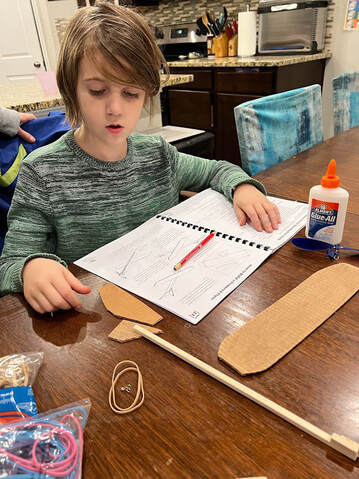 These are the materials we used including the Glue All that works just fine for this project. The pattern to cut out the wings and stabilizers is in the Mysteries of Flight Student Guidebook. For my students, we went ahead and glued the craft stick end to the fuselage. 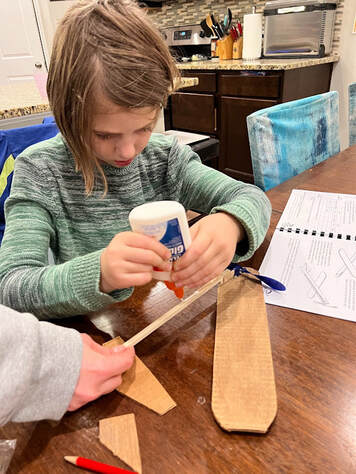 We started with the fun part; placing the plastic propeller on the craft stick in the front of the fuselage. Then, we glued the wings to the fuselage. 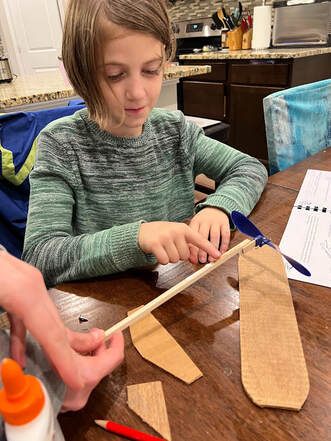 My son enjoyed using his finger to smear the glue to match the width of the wings that he was gluing. 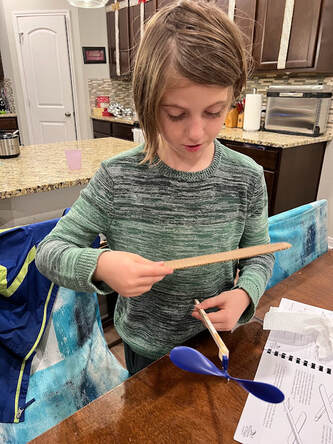 Here, he is trying to make sure that he places his wings in the middle so that each side is of equal length. 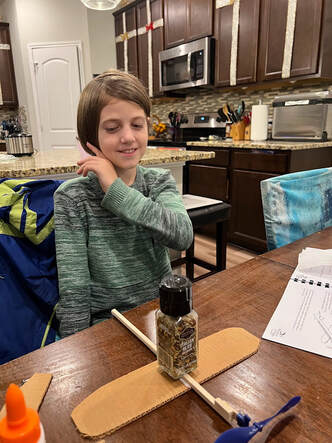 After applying the wings to the glue of the fuselage, we added some weight to it so that there would be a consistent amount of pressure while the glue dried. 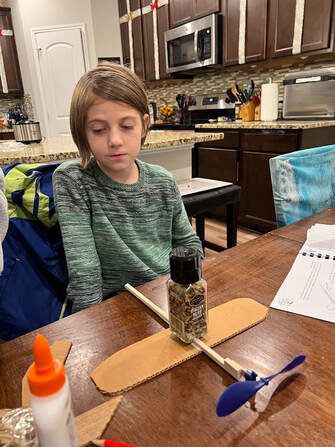 Then we waited a while for the glue to dry before we affixed the horizontal stabilizer and the vertical rudder. 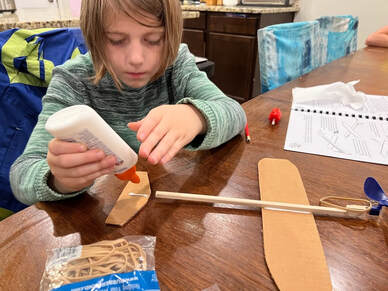 After securing the horizontal stabilizer, we let it sit for a little bit. We then glued the vertical rudder to the stabilizer. 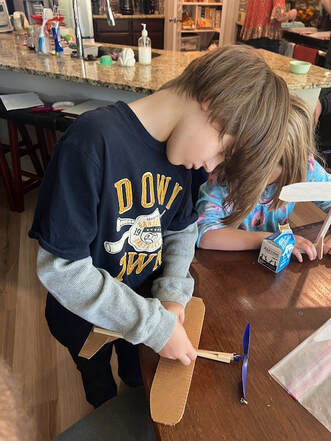 After all the pieces that were glued were able to sit all night to set, we measured by the rubber band where the eyelet should go in order to use it for the power. 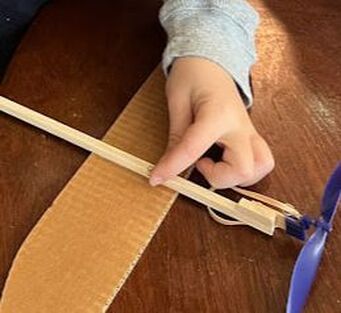 Here is where the rubber band reached to so this is where you take a small screw and place it through the eyelet to secure it to the fuselage 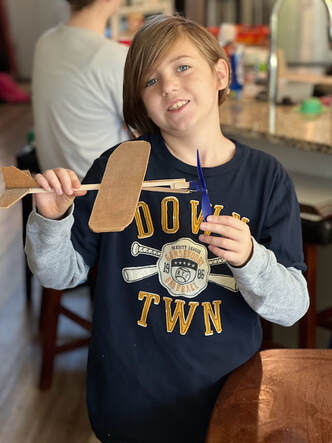 This is what your finished flyer should look like. .After you finish your flyer, you can wind up the rubber band and see what it does. It is wise to let go of the propeller one second before you thrust it out of your hands. The flight seems to turn out better when the propeller has a second to acclimate. Final Jeopardy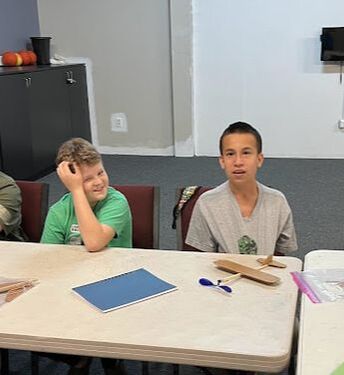 We played cooperative jeopardy as our final exam today. The students all worked together to answer questions and together acquired a pile of candy. I had assigned a certain type of candy to each category that they answered. For instance: 100 questions received candy pumpkins, 200 questions received bite size snickers etc. At the end of the game, we divided up the candy and if there were extras students had to answer more questions to get the candy. It was fun AND we reviewed the information from these past 12 weeks!!! Win Win! Mysteries of flight Curriculum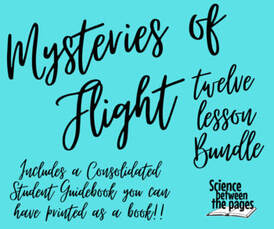 Here is this 12 lesson bundle for sale for $40.00 on our TpT page. This is 12 Lessons that are full of investigations and information about flight and how Orville and Wilbur Wright invented Heavier-Than- Air Flight.
0 Comments
Manna Moment- Freedom from fearDeuteronomy 31:8- "The LORD Himself goes before you and will be with you; He will never leave you nor forsake you. Do not be afraid; Do not be discouraged." After the Wright Brothers were able to control flight in a glider, they then aded an engine. They had to build their own engine too. Then they had to fly with this homemade engine. If engines malfunction, explosions and loss of life can occur. This is scary. However, when we put our trust in Jesus, our Savior, we no longer need to fear death- we have been freed from every fear on earth. We now only need to fear God, the Creator of this world who made all the laws that govern it. He tells the Israelites in Deuteronomy to not be afraid for He has gone before them and He will be with them. If you have confessed and repented from your sin, accepted Jesus as your Savior, then Jesus too, will go before you, preparing the path you are to travel. He will be with you as you travel so you do not need to fear. Should the LORD call you to do something that has never been done, be assured He has already been there to prepare the way. If you find yourself in a difficult situation, God was in it and there before you got to it AND He is with you through it. Orville Wright climbed into that homemade airplane, engine, wings, propeller and all. I do not know whether He trusted the LORD yet if he didn't and he still made the decision to try it, how much more confident can we be to trust an all- knowing God with our lives and future. the wright catapultThe Wright brothers found a place closer to home to test their Wright Flyers. Huffman's Prairie was located near the trolley stop and was a perfect location. They were allowed to use the land with permission. One of the differences between this area and Kitty Hawk was the lack of wind speed. The Flyer needed to get up to 27mph or a minimum flying speed in order to take off. Since the prairie was not smooth and the wind changed directions so frequently, they built a Wright Catapult that would give the Wright Flyers enough thrust to get them into the air without having to wait on the wind. To find out more about this Wright Catapult, here is a great website with detailed pictures and information. Now that all the pieces of the Wright Flyer were there, they now had to learn how to fly and control all three axes of motion using the controls they invented. They had numerous crashes in 1905 learning how to control the Flyer in the air. Eventually, they were able to fly 24.5 miles in 39 minutes and it was at this point they were confident that they had invented "the world's first power driven, heavier-than-air machine in which man made free, controlled and sustained flight.." Jet engines and Balloon RacersThe jet engines that we use today use fans to pull air through the front of the engine. Fuel is released into the engine and is ignited. The heat from ignition causes the air to expand and push out of the back of the engine creating thrust. This moving air forces the plane forward.
When you see streams of 'clouds' in the sky following a plane, these are called contrails and they happen when the hot humid air from the engine meets the cooler air of the sky. During class, we did a balloon racer investigation. Our guiding question was 'how does the amount of air in the balloon affect the speed of the balloon racer? The students made their hypothesis and then we built and tested our racers. Would the balloon move faster or slower with more air? The way we chose to measure the amount of air within the balloon was using a flexible measuring tape that a seamstress would use to measure a waist for a dress. After they inflated their balloon, the students would measure the circumference and then document the time and distance. Using those numbers they would divide the distance by the time to calculate the speed of the balloon. We did as many trials as we could in order to test our hypothesis. Manna MomentHebrews 10:24-25- "And let us consider how we may spur one another on toward love and good deeds, not giving up meeting together, as some are in the habit of doing, but encouraging one another- and all the more as you see the Day approaching." What is the purpose of a propeller on a plane? To provide thrust, that pushes forward. In helicopters, they actually provide the lift to get the helicopter into the air. We can be propellers for others on their journeys. We are called to 'spur one another on' and to 'encourage one another.' We can do this by saying a kind word, offering to help, or working together. Let us propel each other on toward love and good deeds as we meet together to serve one another. Our God is a God of relationship. He has never been alone. He has always been in continuous harmony and unity with God the Father, God the Son and God the Holy Spirit. Because God made us in His image, we were created to need relationship and others. Again I say, let us encourage each other daily, propelling each other on to love and good deeds. adding powerThe Wright brothers perseverance couldn't run out just yet. While they were excited to add power to their successful glider, their assumptions of that being easy were quickly changed. They had assumed that because propellers had been used for over 75 years, there would surely be a design that would work for them. Nope. There were absolutely no formulas or tables on propellers. Ship makers were designing propellers on a trial and error basis so Wilbur and Orville would have to design their own. By 1902, more engines were being built for horseless carriages, however, no automobile company wanted to build a custom engine for the Wright brothers so they would also be building their own engine for their flyer as well. Their perseverance paid off because on December 17, 1903, Orville made the first official flight. Their Wright Flyer stayed in the air for 12 seconds and glided 120 feet. Wilbur then flew it and stayed in the air for 59 seconds and went 852 feet. As they continued to tweak and practice the art of flying, their times grew longer as well as their distances. Every person on earth now, is thankful for the gift of flying. Praise the Lord! Zipline Racer InvestigationHow does the amount of rotations on the propellor affect the speed of the zipline racer? Materials:
In class I set up a zipline the length of the classroom attaching string to chairs and pulling the string taut. Each student had to count how many times they turned their propeller before they tested it on the zipline. Getting students to go back to their investigation sheet and documents how many turns they used in a specific trial is amazingly hard since most of them want to 'play' and just see if it works. I love that these two students I caught documenting their data. Mysteries of flightmanna moment- Dealing with problemsJames 1:2-4 -" Count it all joy, my brothers, when you meet trials of various kinds, for you know that the testing of your faith produces steadfastness. And let steadfastedness have its full effect, that you may be perfect and complete lacking in nothing." The Wright Brothers encountered one problem after another. First, their lift calculations never matched the data they had available at the time. Next, the wing warping apparatus they had engineered was not working correctly and dangerous, Third, they were camping on the beach at Kitty Hawk with many mosquitoes, no bug spray or shelter other than a tent. The winds at Kitty Hawk were not consistent. Sometimes the winds were too much, other times not enough. When their glider crashed, it took three days or more to repair and on and on. Yet each problem that occurred led them to a better solution. Each problem highlighted something that didn't work. Once they fixed the problem, they achieved controlled gliding. With each problem we encounter in our lives let us have the perspective to know that its purpose is for much better. Be humble, make corrections, repent and be made perfect and complete through Jesus Christ our Lord and Savior. Wright Gliders 1, 2, and 3There are many obstacles when we try to achieve something new. This was not any different for the Wright Brothers. Their first glider, where they initiated a 'wing warping' mechanism, struggled to achieve lift. They were using Otto Lilienthal's data and were disappointed that their prototype did not glide as well as what they had expected. They made modifications to correct the problems in the first glider but ended up with more problems which gave them some set backs. One of the setbacks was when Wilbur's nose collided with the elevator. At this time, the elevator was on the front of the glider and Wilbur was on his stomach, so when he crashed, he crashed right into the elevator. It was at this point that they figured that Lilienthal's data was not as accurate as they needed it to be. This was another problem and it demanded that the Wright brothers build their own wind tunnel and collect their own lift data. Finally, a third prototype was tried with a fixed rudder. The tendency of this glider was that one wing would be high and the other wing would be low and plummet into the ground. This too was another problem to overcome. Orville theorized that there was build up of air pressure at the rudder causing it to be unbalanced. The solution to this problem was to have an adjustable rudder. Changing the rudder allowed them control over the three axes of motion and to glide successfully in 30mph winds. Now that they had a successful glider, they felt confident to add some power to it. HelicoptersSince the Wright brothers added a rudder to their Wright glider and they had this idea from their toy helicopter that they played with years ago, I thought I would incorporate a little information about how a helicopter flies. Here is a short video and some questions to ask after to have conversation about what they learned. What are three things that make Henry I helicopter go? 1. The collective which allows the helicopter to take off. 2. Rudder pedals that control yaw (pivot right and left) 3. Cyclic helps the helicopter bank side to side and pitches the nose down controlling roll and pitch. What is a rotor? The rotating blades that supply lift. paper helicopter investigationThe Wright Brothers decided to start conquering the problem of flight by first inventing a glider they could control in the air with no power. Likewise, it is beneficial for the students to investigate this paper helicopter before they add the power of the rubber band for the following investigation. However, if you under time constraints as I am, I will be assigning this investigation for homework and building the rubber band helicopters during class. These paper helicopter templates are found in the Mysteries of Flight Student Guidebook. After they cut and fold them together, they are to place a paperclip on the bottom to give it more weight. For the investigation, they are to see what makes the quickest descent and the fastest spin. While my son dropped his helicopter, I timed the descents. Then for calculating the spins, we colored one blade red to be able to count it easier as it spins. Rubber Band helicopter investigationHere is a video about how to make a Rubber Band Helicopter in order to complete this investigation guide. I let the students create their own helicopter. Some flew really well while others did not. I, again, placed the questions in their lap to help them become the problem solver. Compare your helicopter to another helicopter. What is different and what is the same? Change one thing at a time to control variables and you will figure it out. This was a wonderful activity. Mysteries of Flight Curriculum All the investigation guides and note taking sheets are included in our Mysteries of Flight curriculum. 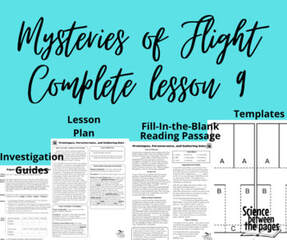 If you would prefer not to commit to the 12 lessons, here are all the pieces you need to do Lesson 9. |
LEAD LEARNERWelcome! My name is Nicole Fleming and I have been leading science learning in the Bryan/College Station homeschool community for over 10 years. Archives
November 2022
Categories |
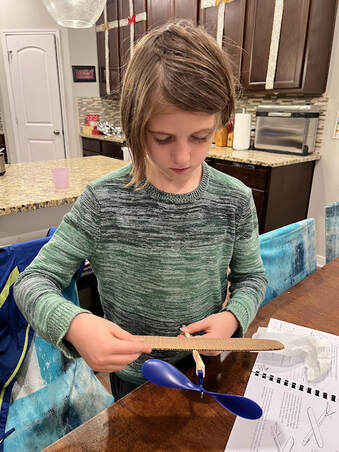
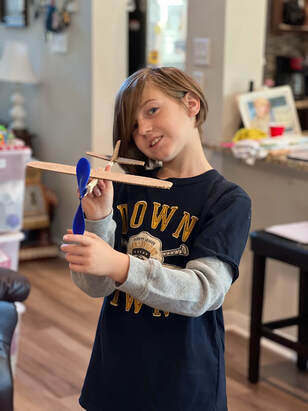
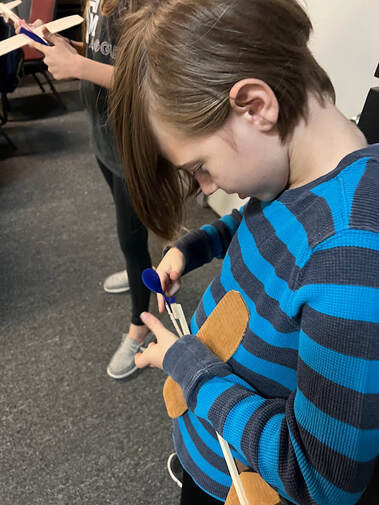
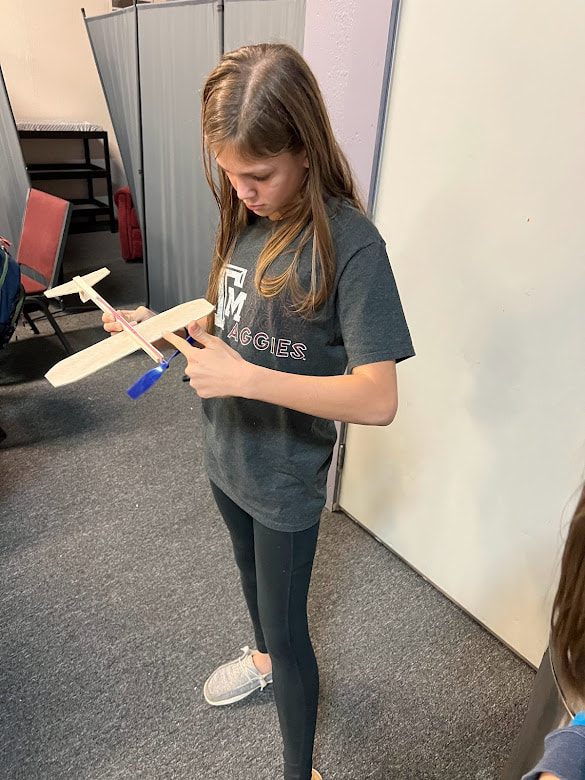

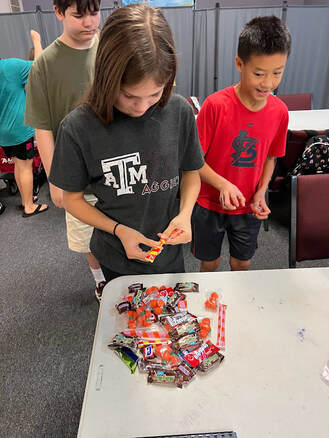
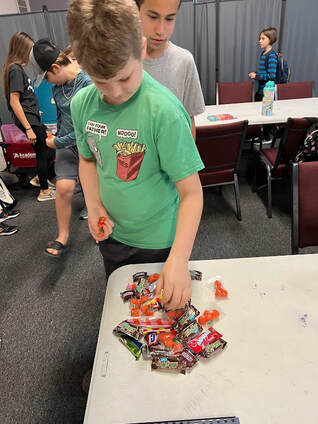
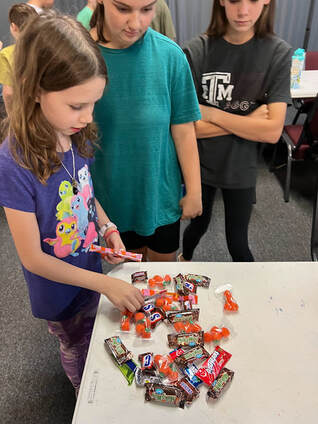
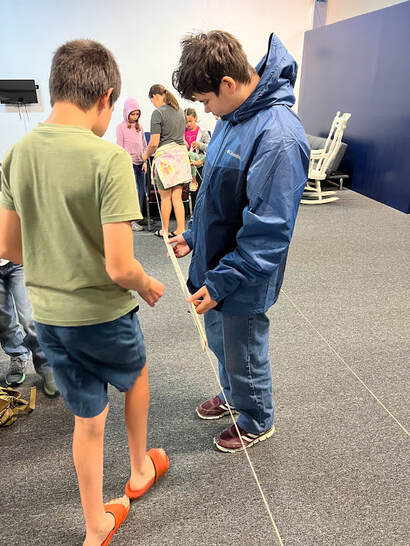
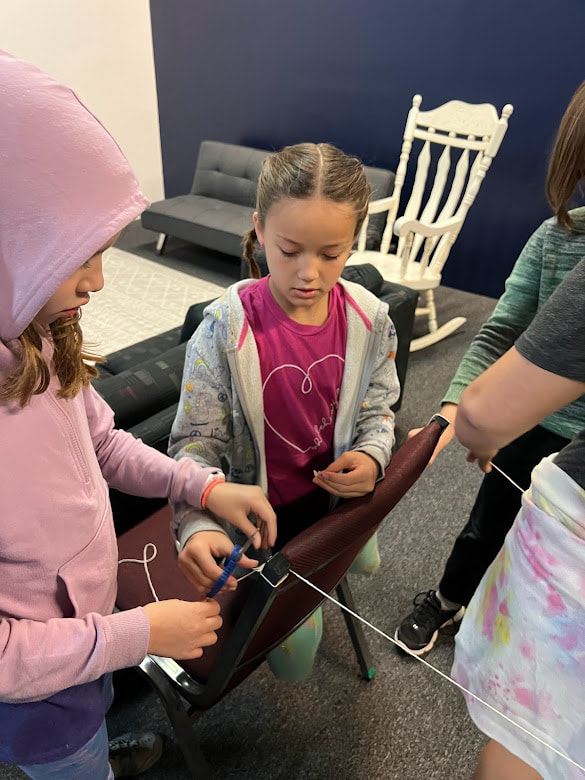
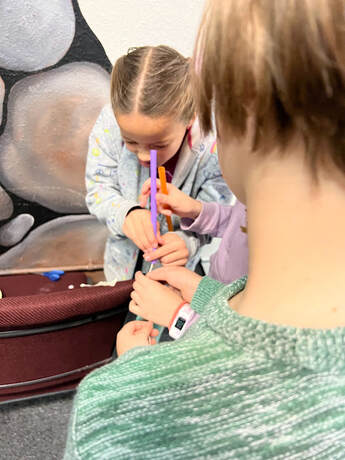
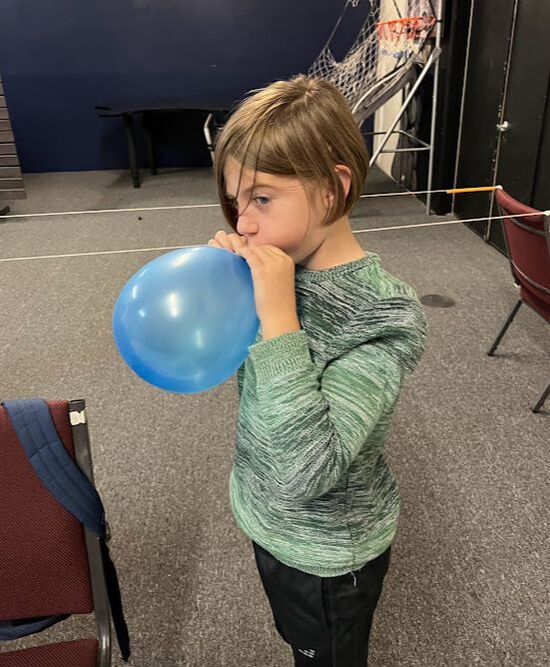
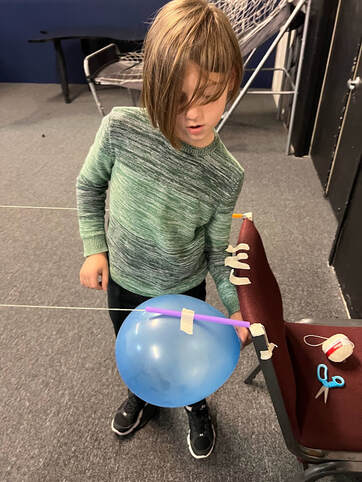
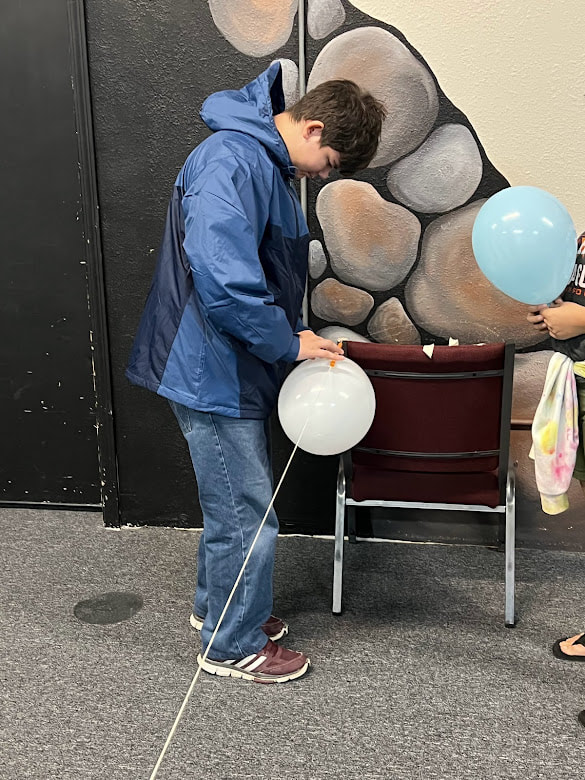
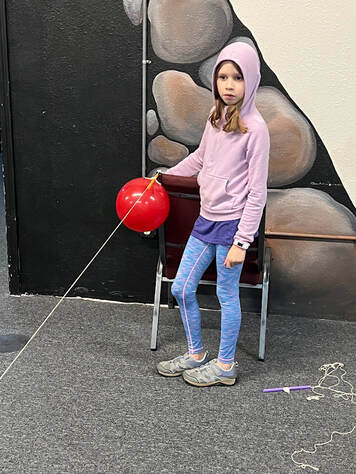
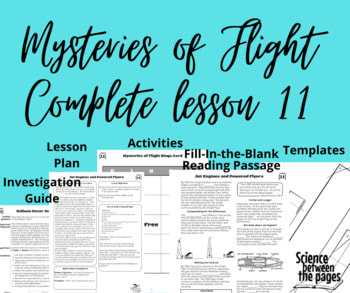
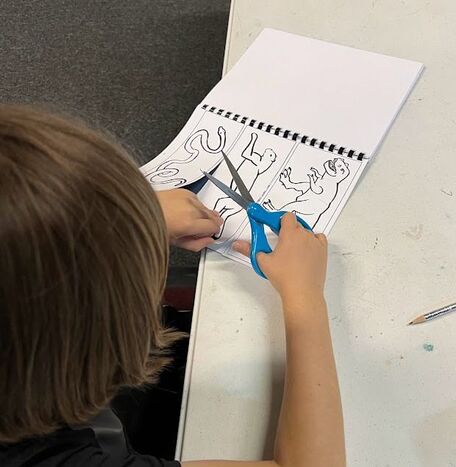
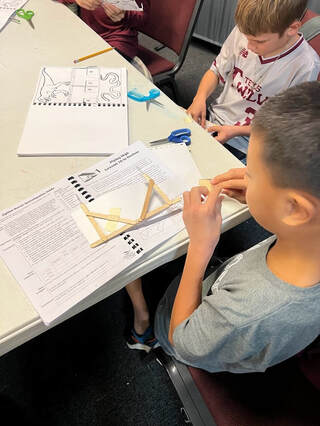
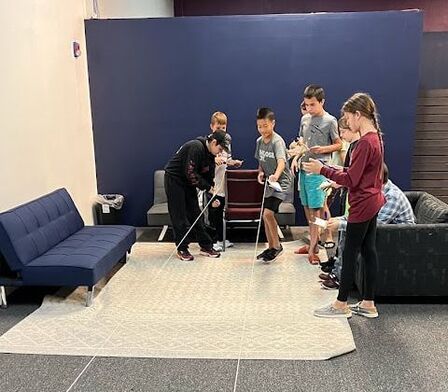
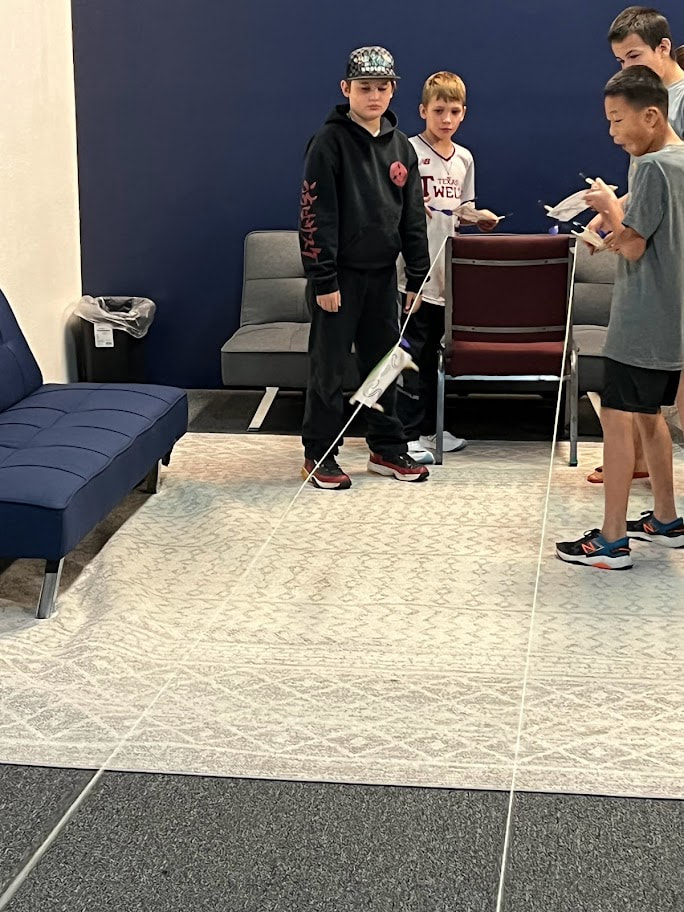
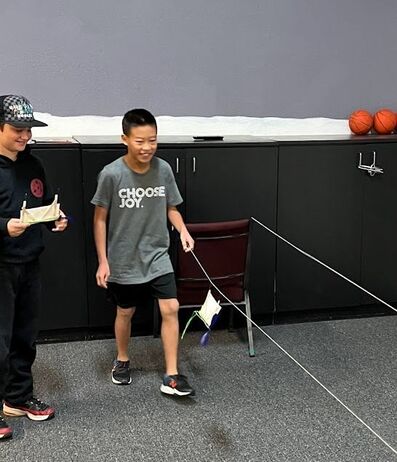
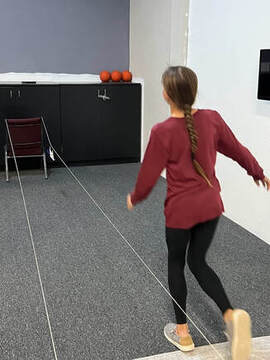
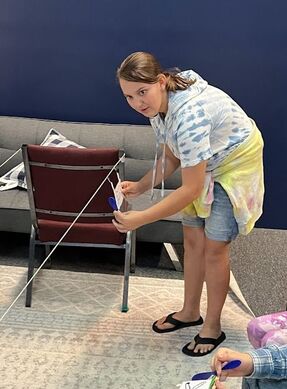
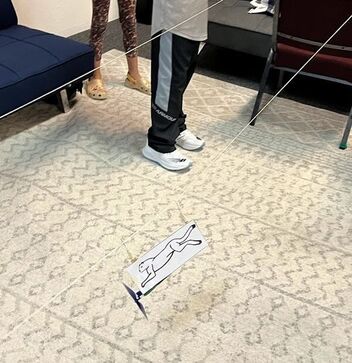

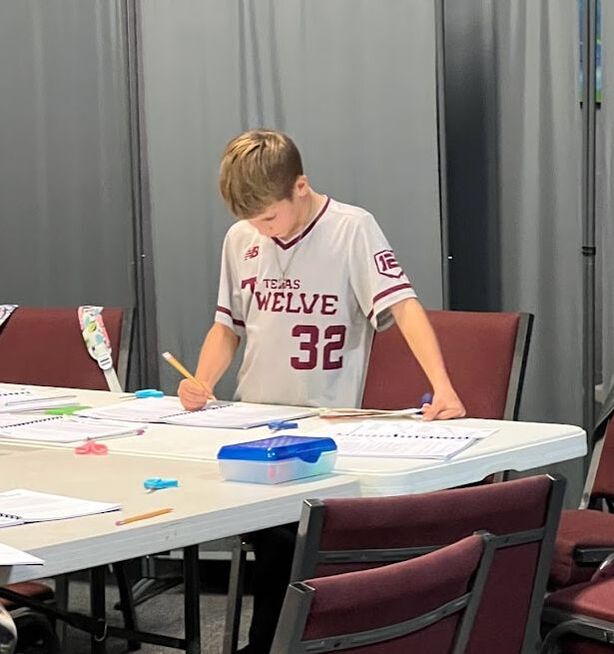
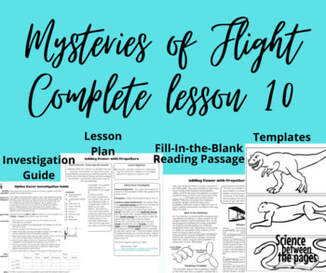
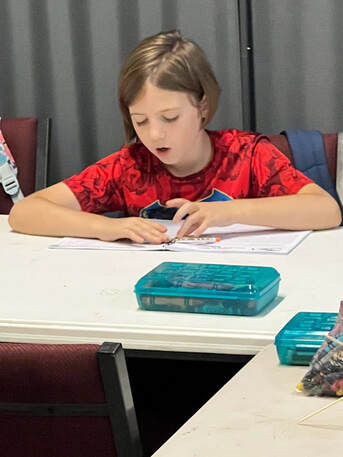
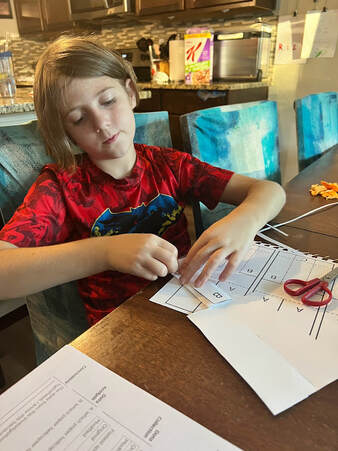
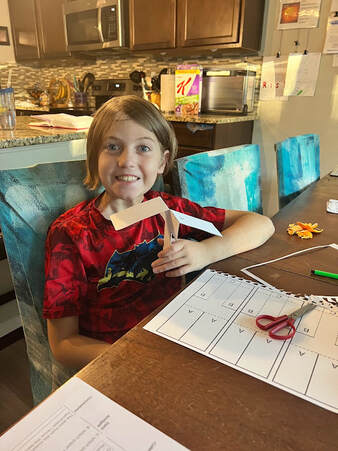
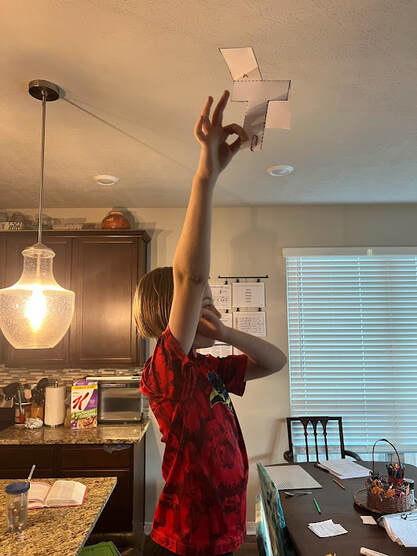
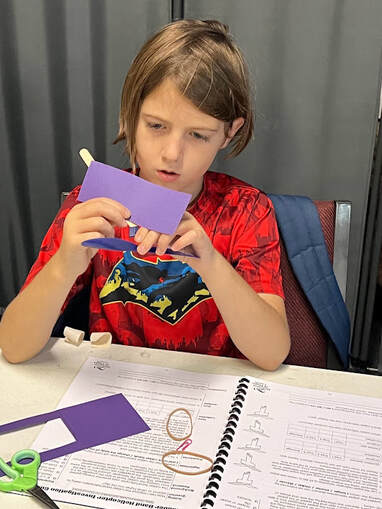
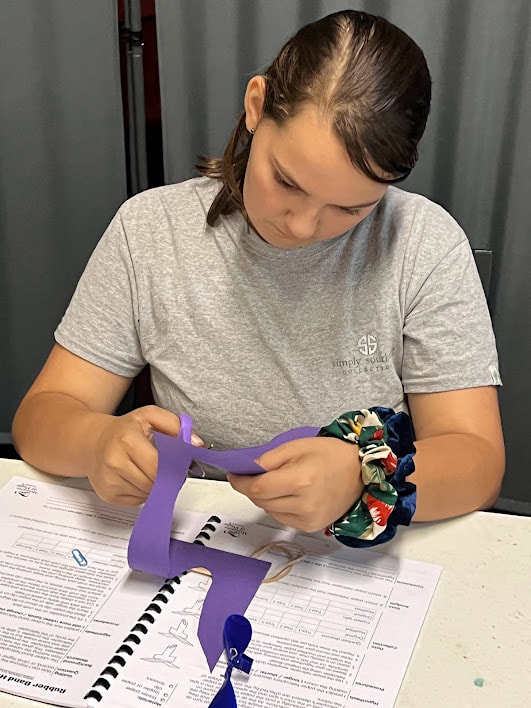
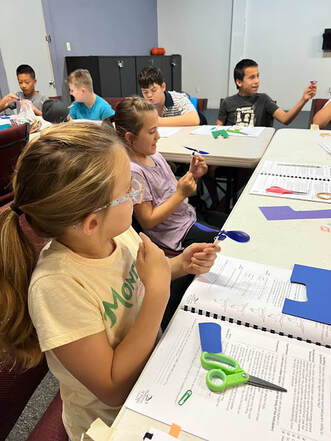
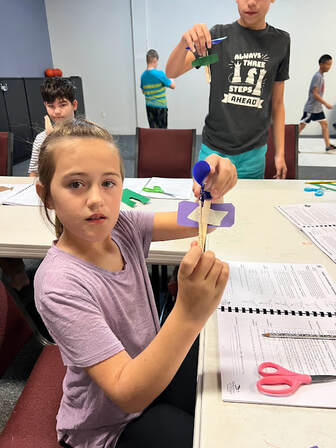
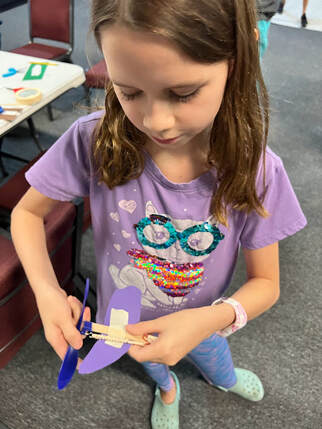
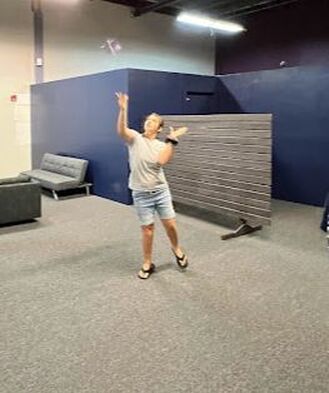
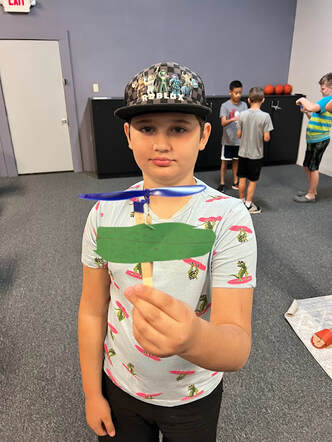
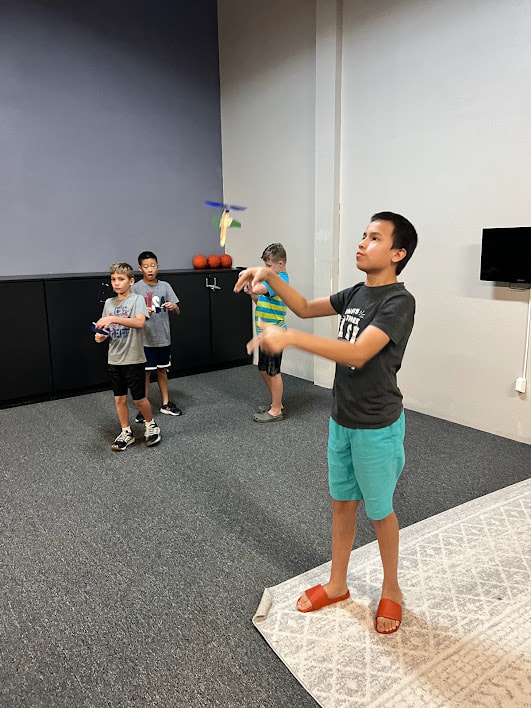
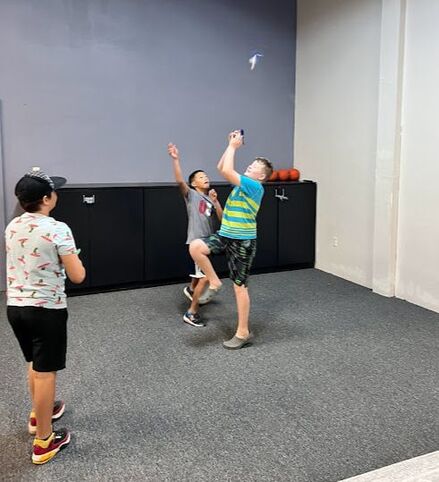
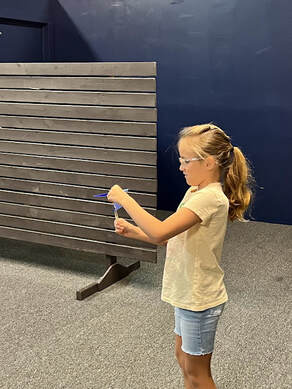
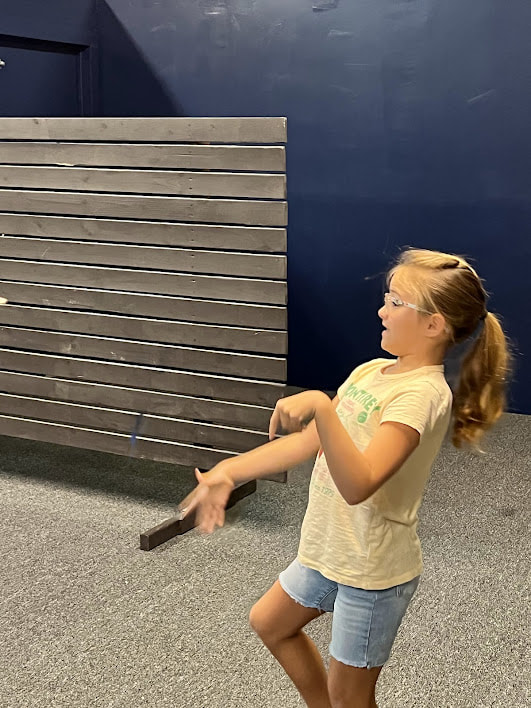
 RSS Feed
RSS Feed